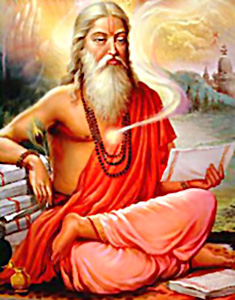 Agastya is one of the rishis or great sages of the Hindu legend. The great sage is linked mainly with the south India, and whose story gives a very good resemblance to that of the myth of Prometheus. Agastya is believed to have given lesson to the Dravidian people about the art of civilization, and although he was not actually being chained to the mountains, he is still - as per the legend-obliged to take shelter on the Agastyakudum, a peak to the north in case it should suddenly decide to grow taller and obstruct the courses of the sun and the moon.
Agastya is one of the rishis or great sages of the Hindu legend. The great sage is linked mainly with the south India, and whose story gives a very good resemblance to that of the myth of Prometheus. Agastya is believed to have given lesson to the Dravidian people about the art of civilization, and although he was not actually being chained to the mountains, he is still - as per the legend-obliged to take shelter on the Agastyakudum, a peak to the north in case it should suddenly decide to grow taller and obstruct the courses of the sun and the moon.
The name of the sage Agastya appears to have been included to the large list of famous and renowned Hindu sages in the post-Vedic periods, after the Aryanization of South India; and this suggests that the sage was originally a Dravidian or even pre-Dravidian deity or a culture hero. The tribes of the Western Ghats, who are considered to be the oldest surviving peoples of the state of Kerala, respect Agastya as the leader who brought them from the north and who also gave then valuable lessons on how to clear the land and to live well in the forests.
Among the megalith builders themselves the tribes people who speak of Agastya appear to know nothing; they refer to their monuments as `monkey stones`, and associate them with the great simian army which the Lord Rama and his famous disciple Hanuman led through South India to the conquest of Ceylon, as described in the great epic Ramayana. Yet when one comes to consider who the megalith builders - the first men to begin the human conquest and ordering of Kerala - actually were, one immediately begins to speculate on the mountain tribes themselves and to consider whether the myth of Agastya leading them down from the north does not actually refer to the southward movement of the megalith builders.
The provenance of Sage Agastya, as the Sea God, Lord Varuna`s son, could be because of his suitable ability of sea-navigation and it might be also sea warfare as well. The Lord Indra and a number of other Devas asked for the aid of Agastya in order to defeat a group of Asuras known as the Kalakeyas, who were very brave and fierce sea warriors. Thus, the arrival of Agastya in Kerala can also be considered to have happened by the sea route.



















